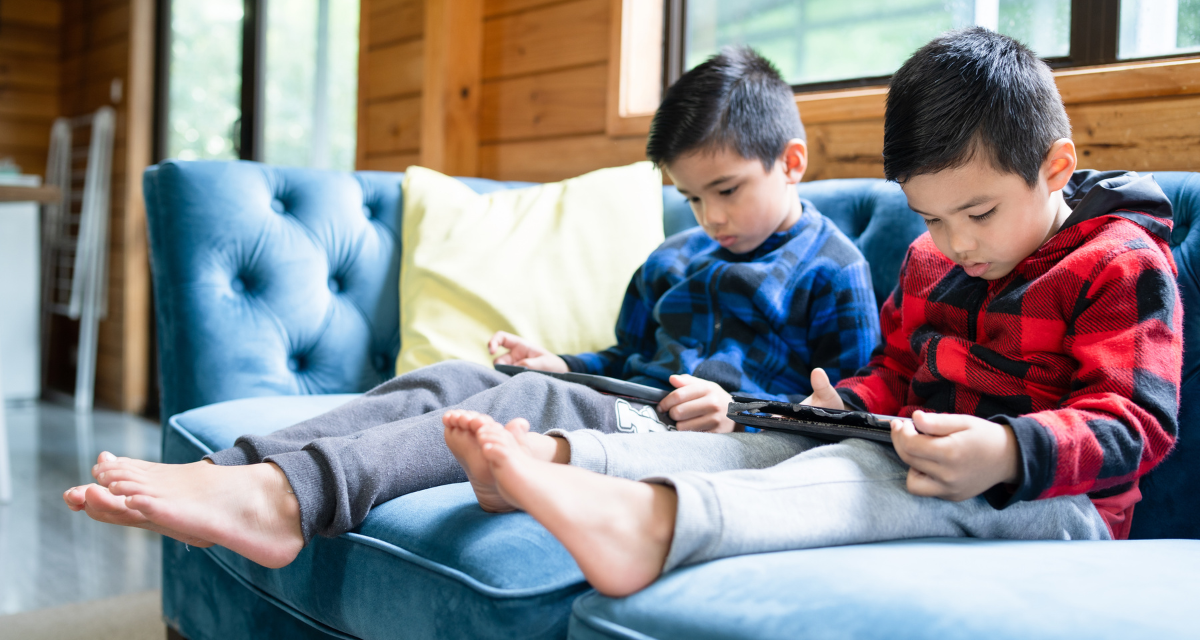
Walking the Fine Line for Screen Time with Younger Children
When I was a young child, growing up in the early to mid-1980s, there wasn’t much concern about screen time. After all, computers were not household items; we only had four channels on our big console television sets.
Certainly, the times have changed in today’s society. There are ample opportunities for screen time available.
- Everyone has a phone nowadays! And everyone’s heads are usually looking down at their phone screens. Hearing someone messing with their phone for as long as eight hours a day is common.
- Tablets, iPads, computers, and laptops are just a few electronic devices available for screen time.

- Televisions with just about every conceivable channel possible.
- Countless streaming apps where there is always something to watch.
- Video games that would put Pac-Man to shame. With interactive stories keeping the attention of every video game player, hours can seemingly go by in minutes.
With all these screen time possibilities, how can we keep a child focused on learning and schoolwork? Better yet, how can we get children to interact with peers and adults instead of staring at a screen?
Limit the Distractions
Of course, this is easier said than done. Once a child is introduced to an electronic device, app, or the latest tv channel with their favorite programs, their focus will be switched to the flashy new product. Limiting these distractions from young children demanding to experience the latest and the greatest can be extremely difficult.
When restricting their screen time, a good option would be to have an easily accessible timer. By showing the children you only allow a certain number of minutes daily for each device or app, they will eventually accept the conditions and responsibly manage their screen time.
In addition, there are user-friendly apps available on various devices that effectively manage and restrict screen time.
Tech-Free Zones
Establish tech-free zones in the household where phones, computers, and televisions are not allowed. This could be actual rooms in the house or set periods. For instance, no devices are allowed at dinnertime or bedtime. The only screen time permitted in the living room would be family movie time. By establishing tech-free zones, the children will eventually adapt and conform. In turn, their attention spans will lengthen, and they can focus on topics for over a minute.
Allow Educational Screen Time
Not all screen time is created equal. It’s not all doom and gloom. For example, when my young toddlers watch Sesame Street, I know they learn valuable lessons. However, when they are watching other content with no educational value, I try to limit their time on it.
The same can be done with apps. Thousands of educational apps are entirely free and available that your children could spend time on instead of social media.
It Is Something That Needs to Be Addressed
Screen time is an issue that should be addressed sooner rather than later. By monitoring screen time when they are still young children, you could prevent them from becoming one of these adults who have their phones out every second of the day later in life. If screen time continues to go unchecked, it can negatively affect social skills and schoolwork. The last thing you should want for your child is to have them live a solitary life with their eyes glued to a screen.
RELATED BLOG POSTS
Learning Apps Students Should Be Spending Time on During the Summer




